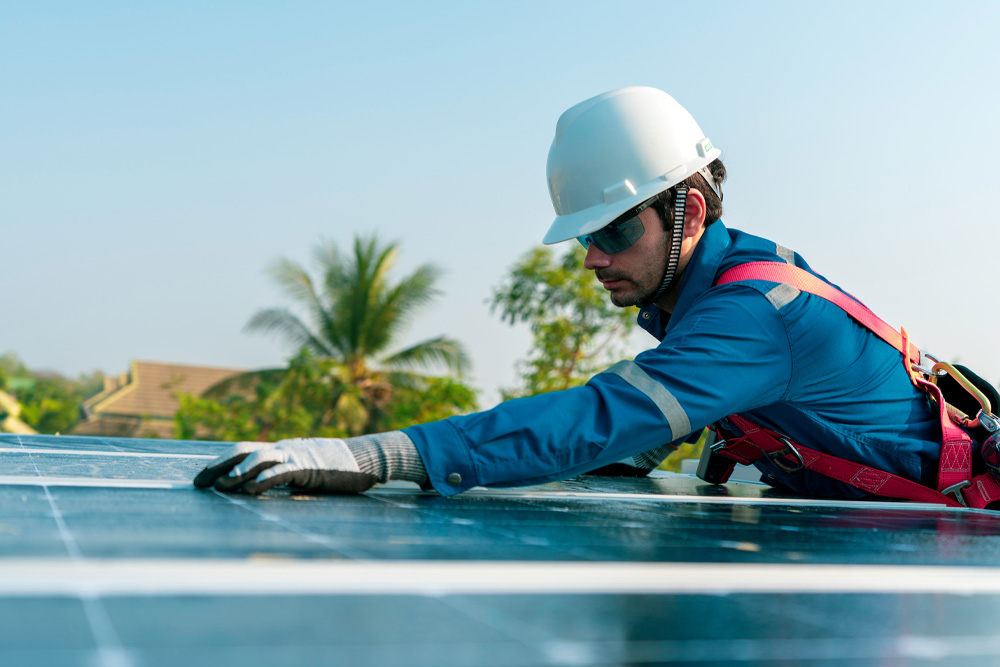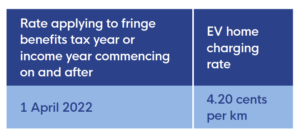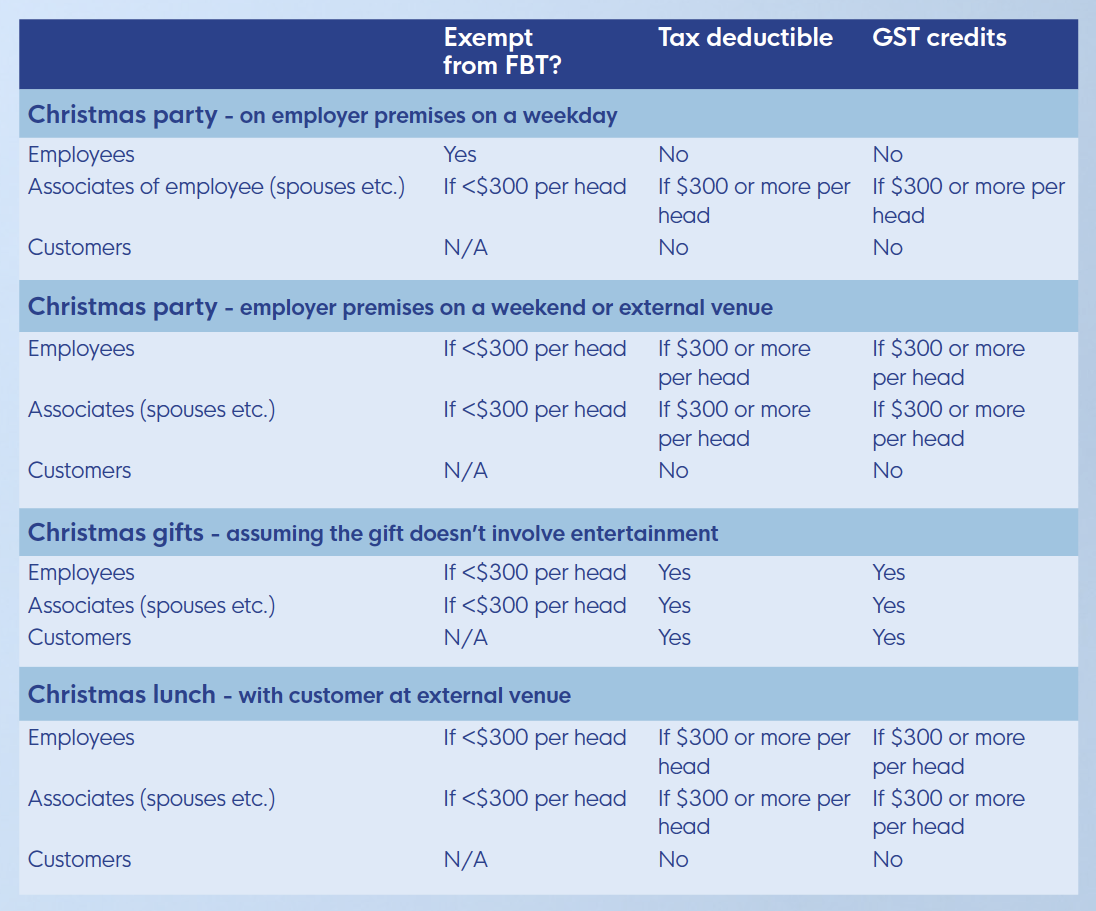25 Sep September 2023 Update

The Billion Dollar TikTok Scandal
$1.7 billion paid out in fraudulent refunds, another $2.7bn in fraudulent claims stopped, around 56,000 alleged perpetrators and over 100 arrests to date. How did the TikTok tax scandal get out of control?
It was promoted as a victimless hack that delivered tens of thousands of dollars into your bank account. Like any hack, taking part was as simple as following the instructions. The streamlined process designed to make it easy for a small business to start-up under Australia’s self-assessment system, also made it easy for the ‘TikTok fraud’ to go viral.
How did it happen?
At some point in 2021, videos started to spread that spelt out how to get the Australian Taxation Office (ATO) to deliver money into your account. Not quite a loan but a hack that sometimes saw tens of thousands delivered into accounts, no questions asked. As the message gained traction, and with more and more people validating the hack, facilitators emerged. All you had to do was hand over your personal details to the facilitators and they would take care of the rest.
The fraud saw offenders inventing fake businesses, applying for an Australian Business Number (ABN), many in their own names, then submitting fictitious Business Activity Statements (BAS) to claim GST refunds.
By late 2021, the Banks noticed the uptick in suspicious activity, mostly large refunds that were out of character for those accounts – in some cases, Centrelink recipients receiving large credits from the ATO. The banks froze a number of accounts and reported the suspicious matters as they are required to do under the Anti-Money Laundering & Counter Terrorism legislation, including to the ATO.
In April 2022, the ATO formed Operation Protego to disrupt the rapid increase in GST refund fraud by individuals that were not genuinely in business. By that stage however, the strategy had gone viral.
By May 2022, the average GST refund paid was $20,000, claimed by around 40,000 people. The ATO conceded around $850 million had been paid out in potentially fraudulent claims. By June 2022, that figure had blown out to $1.2bn but the ATO had stemmed the flow, rejecting $1.7bn in fraudulent claims. Search warrants and arrests of scheme promoters followed.
It’s hard to understand how so many people – an estimated 56,000 Australians – made the leap in logic that some sort of hack had been discovered that enabled you to claim thousands of dollars in tax refunds as a ‘loan’ from the ATO. At the best of times the ATO is not known for its sporadic acts of generosity and laissez faire attitude to tax revenue. We know the opposite is true.
And, why so many accepted a view promoted on TikTok – the act of participating in the fraud required falsifying records at several stages and yet, failed to ring alarm bells. Unfortunately, naivety is not a compelling defence against fraud.
Caught in the web?
“The ATO has zero tolerance to any fraudulent or corrupt behaviour that may in any way impact the ATO.”
The TikTok tax fraud is extensive and has several layers of impact across the 56,000 taxpayers caught up in it.
The closest circle are the scheme promoters and facilitators. To date, more than 100 people have been arrested including members of outlaw motorcycle gangs, organised criminal organisations, and youth crime gangs – and more than 10 people have been convicted for their involvement.
The maximum penalty for promoting a tax fraud scheme is 10 years in prison.
The second circle are those actively engaged in the scheme – who declared that they were carrying on a business, established an ABN, and submitted GST refund claims for expenses they did not incur. For those who received fraudulent GST refunds, the money will need to be paid back, penalties are likely to apply, and there is a risk of criminal proceedings. If the ATO have contacted you, engagement will be the key to reducing penalties and preventing an escalation to criminal proceedings. If you were engaged in the GST refund fraud but the ATO has not contacted you yet, it will be important to work with us as soon as possible to declare and manage the issue.
Where to now for identify theft victims?
The third circle is comprised of the unwitting identity theft victims whose details have been used to generate fraudulent GST refunds. The ATO have had reports of people offering to buy and sell myGov details in order to access refunds. The conversation within the accounting community is that the ATO are inundated at present trying to manage the fallout, not just from the TikTok GST refund fraud but identity theft in general. So, keep on top of your myGov account and if you notice any unusual activity, contact us asap.
The TikTok fraud timeline
“Nobody is giving money away for free or offering loans that don’t need to be paid back.”
ATO Deputy Commissioner and Chief of the Serious Financial Crime Taskforce (SFCT) John Ford.
The upshot to date; $2.7bn in fraudulent claims rejected before being paid, $1.7bn fraudulent payments made with around $66m recovered by 30 June 2022. Another $700m in liabilities, including around $300 million in penalties, raised in 2023-24.

The case of the taxpayer who was paid too late
What a difference timing makes. A recent case before the Administrative Appeals Tribunal (AAT) is a reminder about the tax impact of the timing of employment income.
In this case, the taxpayer was a non-resident working in Kuwait. As part of his work, he was entitled to a ‘milestone bonus’ but, the employer was not in a position to pay the bonus at the time.
When the job ended, the taxpayer moved to Australia and became a resident. Once in Australia, the former employer honoured the performance bonus and paid it as a series of instalments.
The dispute between the ATO and the taxpayer started when the Commissioner issued amended assessments taxing the bonus payments received.
The dispute focused on when the bonus was derived. Had the bonus been derived while the taxpayer was still a non-resident then it would not have been taxed in Australia. This is because non-residents are normally only taxed in Australia on Australian sourced income. Employment income is typically sourced in the place where the work is performed (although there can be exceptions to this).
Australian tax case law says that employment income is normally derived on receipt. In the taxpayer’s case, this was when he received the payments from his former employer, not when he became entitled to the bonus. Because the taxpayer received the bonus when he was a tax resident of Australia, the bonus was subject to tax.
The difference for the taxpayer was quite dramatic. Had he been paid the bonus when it was due, he would have paid no tax as Kuwait does not impose income tax.
Please call us if you are concerned about tax residency or managing overseas income.

The shape of Australia’s future
What will the Australian community look like in 40 years? We look at the key takeaways from the Intergenerational Report.
The 2023 Intergenerational Report (IGR) is a crystal ball insight into what we can expect Australian society to look like in 40 years and the needs of the community as we grow and evolve. It doesn’t map out our path to flying cars and Jetsons style robotic domestic help (unfortunately) but it does forecast structural trends that will give many of us a level of anxiety about what we need to be doing now to successfully navigate the future.
The report links the continued growth and prosperity of Australia to five significant areas of influence:
We’re ageing
Thanks for the reminder. The number of people aged 65 and over will more than double and the number aged 85 and over will more than triple. We’re expected to live longer with the life expectancy of men increasing from 81.3 to 87 years and from 85.2 to 89.5 for women by 2062-63. And that’s a problem for the younger generation.
Who bears the burden of an ageing population?
Australia’s low birth rate, limited migration and increased longevity all have an impact. The old age percentage – the number of people aged 65 and over for every 100 people of traditional working age (15 to 64) in the population – will increase from 26.6% to 38.2%.
From a tax perspective, Australia’s reliance on personal tax means workers will bear an increasing proportion of the tax burden under current fiscal policy. In a recent interview, former Treasury boss Ken Henry labelled it an “intergenerational tragedy” with personal tax growing from 11.7% of GDP to 13.5% based on current policy. The report says that “only 12% of Australians aged 70 and over pay income tax and this age group now makes up 12.2% of the total population. This age group is expected to increase to 18.1% of the total population in 2062-63.” Wholesale tax reform will be required to prevent the growing tax burden on individuals dragging on the economy. With economic growth expected to slow to 2.2% from 3.1% over the next 40 years, the solution will not magically arise from corporate Australia. If it was not for our high rate of inflation you would think an increase to the GST was imminent.
Services and who pays
Demographic ageing alone is estimated to account for around 40% of the increase in Government spending over the next 40 years.
The outcome of an ageing population, as you would expect, is increased demand for care and support services that will push the Federal Budget back to a point where deficits are the norm if the current policies remain in place.
From a consumer perspective, it also means that the trend towards user-pays will only increase. As individuals, we need to ensure that we have the means to fund our old age because Government resources will be limited by increasing demand and this demand is funded by a deteriorating percentage of workers contributing to tax revenue.
It’s also likely that we will need to look at how we generate income. For some that might mean working longer, for others it is value adding – creating, buying and selling assets in some form, whether that is business, innovation, or through more traditional assets such as property or financial products.
Superannuation the size of a nation
Australia currently has the fourth largest pool of retirement assets in the world, with total superannuation balances projected to grow from 116% of GDP in 2022-23 to around 218% by 2062-63. Our superannuation system will be what underwrites retirement for most Australians. At present, around 70% of people over aged pension age receive some form of Government income support. Over time, and as our superannuation system matures, this percentage is expected to decline sharply as a percentage of GDP with Government support supplementing rather than providing for retirement (the first generation of workers with superannuation guarantee throughout their working life hit retirement age around 2058).
However, the IGR points out that, “the cost of superannuation concessions will increase, driven by earnings on the larger superannuation balances held by Australians.” The proposed tax on future earnings on super balances above $3m may not be the last.
You can expect the management of superannuation to be a priority for Government to ensure that retirement savings are maximised to reduce the reliance on Government support, and to ensure that this enormous pool is leveraged for the gain of not only members, but the nation.
Growth of services
Like most advanced economies, global competition has shifted Australia’s industrial base from the production of goods to services. Ninety percent of jobs are now in services.
With an ageing population, demand for health and care services is expected to soar. People aged 65 or older currently account for around 40% of total Australian health expenditure, despite being about 16% of the population. The IGR estimates that the workforce required to support this sector will need to be twice the size of what it is now to meet demand by 2049-50.
The Government’s biggest spending pressures will be health, aged care, the NDIS, defence and interest payments on government debt. Of these, the NDIS is the fastest growing at 7% per year.
The role of technology
The speed of technological change is difficult to predict, and the IGR doesn’t attempt to make predictions. But what we do know is that technology has had a transformational impact on labour productivity (the value of output of goods and services produced per hour of work). Over the last 30 years, labour productivity has accounted for around 70% of the growth in Australia’s real gross national income. But, tempering this is a slowing of labour productivity growth since the mid-2000s.
We know technological disruption is coming and the debate about the role of artificial intelligence is only just beginning. We also know that unless technology is accessible, our future will be one polarised by those who have and have not benefited from technological change.

Climate change transformation
There are two key aspects to climate change; the cost of rising temperatures, and the opportunity created by the shift to renewable energy.
Temperatures are anticipated to increase by 1.5 degrees before 2100, potentially before 2040.
From 1960 to 2018, climate disasters reduced annual labour productivity in the year they occurred by about 0.5% in advanced economies. However, for severe climate disasters labour productivity is estimated to be around 7% lower after three years. With rising temperatures, floods, bushfires and other extreme weather events are expected to increase in frequency and severity. The impact of climate change spelt out in the report is sobering with disruptions and changing patterns impacting agriculture, tourism, recreation and industries that rely on labour intensive outdoor work.
On the positive side, Australia could benefit from new “green” industries, such as hydrogen and other clean energy exports, critical minerals and green metals. It is also likely to drive new, innovative ideas as businesses invest in and develop low emissions technologies, providing a source of future productivity growth in a more sustainable economy. Australia’s potential to generate renewable energy more cheaply than many countries could also reduce costs for both new and traditional sectors, relative to the costs faced by other countries.
Geopolitical risks
Australia relies on open international markets. Trade disputes and military conflicts pose an external threat to Australia’s economy and well being. While the IGR cannot predict the nature of geopolitical events, it notes the importance of investing in national security, presumably this includes cybersecurity, ensuring access to international markets, and deepening regional partnerships to reduce supply chain vulnerabilities.

Legislating the ‘objective’ of super
The proposed objective of superannuation released in recently released draft legislation is: ‘to preserve savings to deliver income for a dignified retirement, alongside government support, in an equitable and sustainable way.’
The significance of legislating the objective of super is that any future legislated changes to the superannuation system must be in line with this objective. It’s a fairly broad definition. For example, “equitable” seeks to address the distributional impact of superannuation policy. That is, latitude for the Government to target tax concessions to address differences in demographic factors and structural inequities including intergenerational inequity and outcomes for different groups including women, First Nations Australians, vulnerable members and low-income earners.
“Sustainable” encapsulates the changing needs of an ageing population including reducing the reliance on the Age Pension. The draft also alludes to the viability of the cost of tax concessions used to incentivise Australians to save for retirement.
“Deliver income” appears to reinforce the concept that superannuation savings “should be drawn down to provide individuals with a source of income during their retirement.”
More than 15 million Australians now have a superannuation account. Australia’s superannuation pool has grown from around $148 billion in 1992 to $3.5 trillion in 2023, and will continue to grow. Total superannuation balances as a proportion of GDP are projected to almost double from 116% in 2022–23 to around 218% of GDP by 2062-63. The consultation also recognises the value of the superannuation system as a source of capital, “which can support investment in capacity-building areas of the economy where there is alignment between the best financial interests of members and national economic priorities.”

Why is my tax refund so small?
The tax refund many Australians expect has dramatically reduced. We show you why.
There is a psychology to tax refunds that successive Governments have been reticent to tamper with. As a nation, Australia relies heavily on personal and corporate income tax, with personal income tax including taxes on capital gains representing 40% of revenue compared to the OECD average of 24%. And, for the amount we pay, we expect a reward.
The reward is in the form of tax deductions that reduce the amount of net income that is assessed for tax purposes and tax offsets that reduce the tax payable, generating a refund for some. And, refunds have a positive impact on tax compliance.
As part of the previous Government’s efforts to flatten out the progressive individual income tax system, a time-limited low and middle income tax offset was introduced. The lifespan of the offset was extended twice, partly as a stimulus measure in response to COVID-19. The offset delivered up to $1,080 from 2018-19 to 2020-21, and up to $1,500 in 2021-22 for those earning up to $126,000. This was a significant boost for many people each tax time and bolstered the tax returns of millions of Australians. For many, the end of this offset has meant that their tax refund has reduced dramatically compared to previous years.
Do we pay more tax than other nations?
It depends on how you look at the statistics. Australia relies heavily on income tax, collecting 40% of tax revenue from personal income. That makes Australia the fourth highest taxing nation for personal tax in the OECD – but we were second highest in 2019 if that makes you feel better. But, if you are looking at take home pay there is a separate measure for that. The Employee tax on labour income looks at our take home pay once tax is taken out and benefits have been added back in. This shows that the take home pay of an average single worker is 77% of their gross wage compared to the OCED average of 75.4%. For the average worker with a family (one married earner with 2 children), once tax and family benefits are taken into account, the Australian take home pay average is 84.1% compared to the OECD average of 85.9%. All of this means that Australia is a high taxing nation but returns much of that in the form of means tested benefits.
Australia also does not have social security contributions like other nations. These contributions represent an average of 27% of the total tax take for OECD nations.
And, because Australia has a progressive tax system, the pain of taxation is felt more by higher income earners. The top 11.6% of Australian income earners contribute 55.3% of the tax revenue from personal income tax.
With the final round of legislated income tax cuts due to commence on 1 July 2024, this should reduce the overall dependence on personal income tax relative to corporate and other taxes.
So, do we personally pay more tax than other nations? If you are a high-income earner the answer is likely to be yes. If not, the answer is no.
As Benjamin Disraeli reportedly said, “…lies, damn lies, and statistics”. It’s all how you read it.
Is a second job worth it?
In an Uber the other day, the driver revealed that he had become a driver to pay for his second mortgage. He invested in property but with interest rates spiking, the only way he could hold onto the property was to earn additional income. His “day job” starts early and ends at 3pm at which time he heads off to start driving.
He is not alone. The latest stats from the Australian Bureau of Statistics reveal that the number of workers holding multiple jobs has increased by 2.1% since December 2022 – in total, Australia has 947,300 people holding multiple jobs or 6.6% of the working population.
The reason why people take on second jobs is varied. For some, it is to manage increasing costs, for others it is to start up a new venture but with the security of a regular income stream from their primary occupation.
Is it worth it?
From a tax perspective, Australia has a progressive income tax system – the more you earn the more tax you pay, and access to social benefits tapers off. It’s important when looking at a second job to understand your overall position – how much you are likely to earn, your costs of generating income, and what this income level will mean.
The trap for many picking up a ‘gig economy’ second job is that they are often independent contractors. That is, you are responsible for managing your tax affairs. All Uber drivers for example, are required to hold an ABN and be registered for GST. There is a compliance cost to this and from a cashflow perspective, 1/11th of the fee collected needs to be remitted to the Tax Office once a quarter. It’s important to quarantine both the GST owing and income tax to ensure you have the cashflow to pay the tax when it is due. The upside is you can claim the expenses related to your second job.
If you are taking on a second job, ensure that your tax-free threshold applies to your highest paying job from a PAYG withholding perspective.

Succession: What does it take to and your business to the next generation?
What is the end game for your business? Succession is not just a topic for a TV series or billionaire families, it’s about successfully transitioning your business and maximising its capital value for you, the owners.
When it comes to generational succession of a family business, there are a few important aspects:
- Succession of the business;
- Succession of the ownership of the business;
- Succession planning/pathway; and
- Moving from a business family to an investment family.
For generational succession to succeed, even if that succession is the sale of the business and the management of the sale proceeds for the benefit of the family, communication is essential. Where generational succession fails, it is often because succession has not been formalised until a catalyst event or retirement planning requires it.
A concept of ‘legacy’ is not enough. Successful succession occurs when the guiding principles of governance, family rules, aligning values, dispute resolution, succession and estate planning are managed well before discontent tears it apart.
Generational succession usually involves the transfer of an interest in a business to another generation of a family (usually younger). It is often a family in business rather than simply a family business.
The options for how a movement of an interest may occur are many and varied but usually focus on the transfer of some or all of the equity held in the business over a period or at a defined point in time and the payment of some form of consideration for the equity transferred. Alternatively, a part of the equity transfer may ultimately be dealt with through the estate.
Generational succession comes with its own set of issues that need to be dealt with:
Capability and willingness of the next generation
A realistic assessment of whether the business can continue successfully after the transition. In some cases, the older generation will pursue generational succession either as a means of keeping the business in the family, perpetuating their legacy, or to provide a stable business future for the next generation. While reasonable objectives, they only work where there is capability and willingness. Communication of expectations is essential.
Capital transfer
Consider the capital requirements of the exiting generation. To what extent do you need to extract capital from the business at the time of the transition? The higher the level of capital needed, the greater the pressure on the business and the equity stakeholders.
In many cases, the incoming generation will not have sufficient capital to buy-out the exiting generation. This will require the vendors to maintain a continuing investment in the business or for the business to take on an increased level of debt. Either scenario needs to be assessed for its sustainability at a business and shareholder level. In some scenarios the exiting owners will transition their ownership on an agreed timeframe.
Managing remuneration
In many small and medium businesses, the owners arrange their remuneration from the business to meet their needs rather than being reasonable compensation for the roles undertaken. This can result in the business either paying too much or too little. Under generational succession, there should be an increased level of formality around compensation. Compensation should be matched to roles, and where performance incentives exist, these should be clearly structured.

Who has operational management and control?
Transition of control is often a sensitive area. It is essential to establish and agree in advance how operating and management control will be maintained and transitioned. This is important not only for the generational stakeholders but also for the business. Often the exiting business owners have a firm view on how the business should be run. Uncertainty in the management and decision making of the business can lead to confusion or a vacuum – either will have an adverse impact. Tensions often arise because:
- The incoming generation want freedom of decision making and the ability to put their imprint on the business.
- Without operating control, they feel that they have management in name only.
- The exiting generation believe that their experience is necessary to the business and entitles them to a continued say.
- A perception that capital investment should equate to ultimate operating control.
- An uncertainty by either or both generations about the extent of their ongoing roles.
Agreeing transition of control in advance, on an agreed timeframe, can significantly reduce tensions.
Transition timeframes and expectations
Generational succession is often a process rather than an event. The extended timeframe for the transition requires active management to ensure that there are mutual expectations and to avoid the process being derailed by frustration.
The established generation may have identified that they want to scale down their business involvement and bring on other family members to succeed them. This does not necessarily mean that they want to withdraw completely. An extended transition period is not uncommon and can often assist the business in managing the change. This can also work well in managing income and capital withdrawal requirements.
The need for greater formality and management structure
A danger for many SMEs is the blurring of the boundaries between the role of the Board, shareholders, and management. With generational succession, this can become even more pronounced. Formality in these structures is important, with clear definitions of the roles and clarification of the expectations. For example, who should be a director and what is their role?
For some, the role of the family is managed by a family constitution – an agreed set of rules. For others there will be an external advisory group that advises the family to ensure that the required independent expertise is brought to bear.
Successfully managing generational change is a process we can help you navigate. Talk to us about how we can help to structure an effective transition path.

Thinking of subdividing? The tax implications and pitfalls of small-scale subdivisions
You’ve got a block of land that’s perfect for a subdivision. The details have all been worked out with Council, the builders, and the bank. But, one important aspect has been left out; the tax implications.
Many small-scale developers often assume that their tax exposure is minimal – but this is not always the case and the tax treatment of a subdivision project can significantly impact on cashflow and the financial viability of the project.
New guidance from the Australian Taxation Office (ATO) walks through the tax impact of small-scale subdivision projects. We look at some of the leading issues:
Tax treatment of the subdivision
Subdividing land
The tax treatment of even a small subdivision can become complex very quickly and tax applies according to the circumstances. You cannot simply assume that just because it’s a small development, any profit from the eventual sale will be taxed as a capital gain and qualify for CGT concessions.
In general, if you own a property personally, it has been held and used for private purposes over an extended period, you subdivide it and sell the newly created block, then capital gains tax is likely to apply to any gain you make. The gain is recognised from the point you first acquired the land, although you will ned to apportion the amount paid for the property between the subdivided lots. If you are subdividing a property that contains your home – the main residence exemption will not generally be available if you sell a subdivided block separately from the block containing your home, even if the land has only ever been used for private purposes in connection with your home.
If a property is initially owned jointly but the property is subdivided and the lots split between the owners, then this will normally trigger upfront tax implications even though the land hasn’t been sold to an unrelated party yet. Arrangements like this (referred to as partitioning) can be complex to deal with from a tax perspective.
Developing a property
But what happens if you develop the land? It’s not uncommon for people to decide to subdivide and develop their block by building a house or duplex and then selling the new dwelling.
When someone develops a property with the intention of selling the finished product at a profit in the short term, there is a risk that this will be taxed as income rather than under the capital gains tax rules. This limits the availability of CGT concessions (such as the 50% CGT discount) and will often expose the owners to GST liabilities as well. This can be the case even for one-off property developments.
Let’s look at an example. Claude purchased his home on 1 July 2001 for $300,000. In July 2020, Claude began investigating the idea of subdividing his block and building a new house, then selling it. A registered valuers report on the subdivision says that the original house and land is now worth $360,000, and the subdivided lot is worth $240,000 (the valuation is an important step before commencement to prevent any debates with the ATO). Claude decides to go ahead and build a dwelling on the newly subdivided block and takes out a loan of $400,000 for the development. He intends to pay off the loan as soon as the house sells.
In July 2021, Claude sells the subdivided block and new home for $1,210,000 (GST-inclusive).
Here is how the tax works for Claude’s scenario:
- Claude made an overall economic gain of $580,000.
- The overall gain ($580,000) is based on the GST exclusive sale proceeds ($1,100,000, although we are assuming that the GST margin scheme isn’t applied) minus the GST exclusive development expenses ($400,000) and the original cost attributable to the newly subdivided lot of $120,000 ($300,000 × 40%).
- The increase in the value of the newly created subdivided lot from when it was originally acquired (1 July 2001) up to when the profit-making activities began (1 July 2020) should be treated as a capital gain.
- The value of the newly created subdivided lot at the time Claude began to undertake profit-making activities on 1 July 2020 was $240,000. The original cost, attributable to the newly created subdivided lot was $120,000 (40% × $300,000) on 1 July 2001. This means that there is a capital gain of $120,000.
- As Claude has held the subdivided block for greater than 12 months he is entitled to a 50% CGT discount, hence there is a discounted capital gain of $60,000.
- The increase in the value of the newly created subdivided lot from when the profit-making activities began up to the time of sale should be treated as ordinary income.
- The net profit ($460,000) will be based on the GST exclusive sale proceeds ($1,100,000) minus the GST exclusive development expenses ($400,000) and the value of the subdivided lot ($240,000).
If Claude is not carrying on a business, he cannot claim a deduction for the development expenses as they are incurred. They will be taken into account in determining the net profit on sale.
If Claude finished the development but decided not to sell the property, then this would complicate the income tax and GST treatment. We would need to explore what Claude plans to do with the property.
Do I need to register for GST?
If you are an individual who is subdividing land that has been held and used for private purposes then you might not need to GST, although this will depend on the situation. However, if you are engaged in a property development business or a one-off project that is undertaken in a business-like manner, then it is more likely that you would need to register for GST.
In Claude’s scenario, because the projected sale price of the developed land was above the GST threshold of $75,000, he will probably need to register for GST. This will mean that he:
- Has a ‘default’ GST liability of $110,000 on the sale price of the developed block, although it might be possible to reduce the GST liability by applying the GST margin scheme
- Needs to provide a notification to the purchaser of the amount at settlement to be withheld and paid to the ATO
- Is able to claim $40,000 credits for the GST included in the development expenses (subject to the normal GST rules), and
- Must report these transactions by completing business activity statements.
The tax consequences of subdivision and other property projects can be complex. If you are contemplating undertaking a subdivision and any property development activities, please contact us and we can help walk you through the scenarios and tax impact of the project.














































